Animal studies of attachment
1/11
There's no tags or description
Looks like no tags are added yet.
Name | Mastery | Learn | Test | Matching | Spaced |
|---|
No study sessions yet.
12 Terms
animals studies of attachment
Lorenz' geese study
Harlow's monkeys
Konrad Lorenz
1952
organisms have a biological propensity to form attachments to 1 single object
imprinting
12 fertilised geese eggs
"lorenz' goslings"
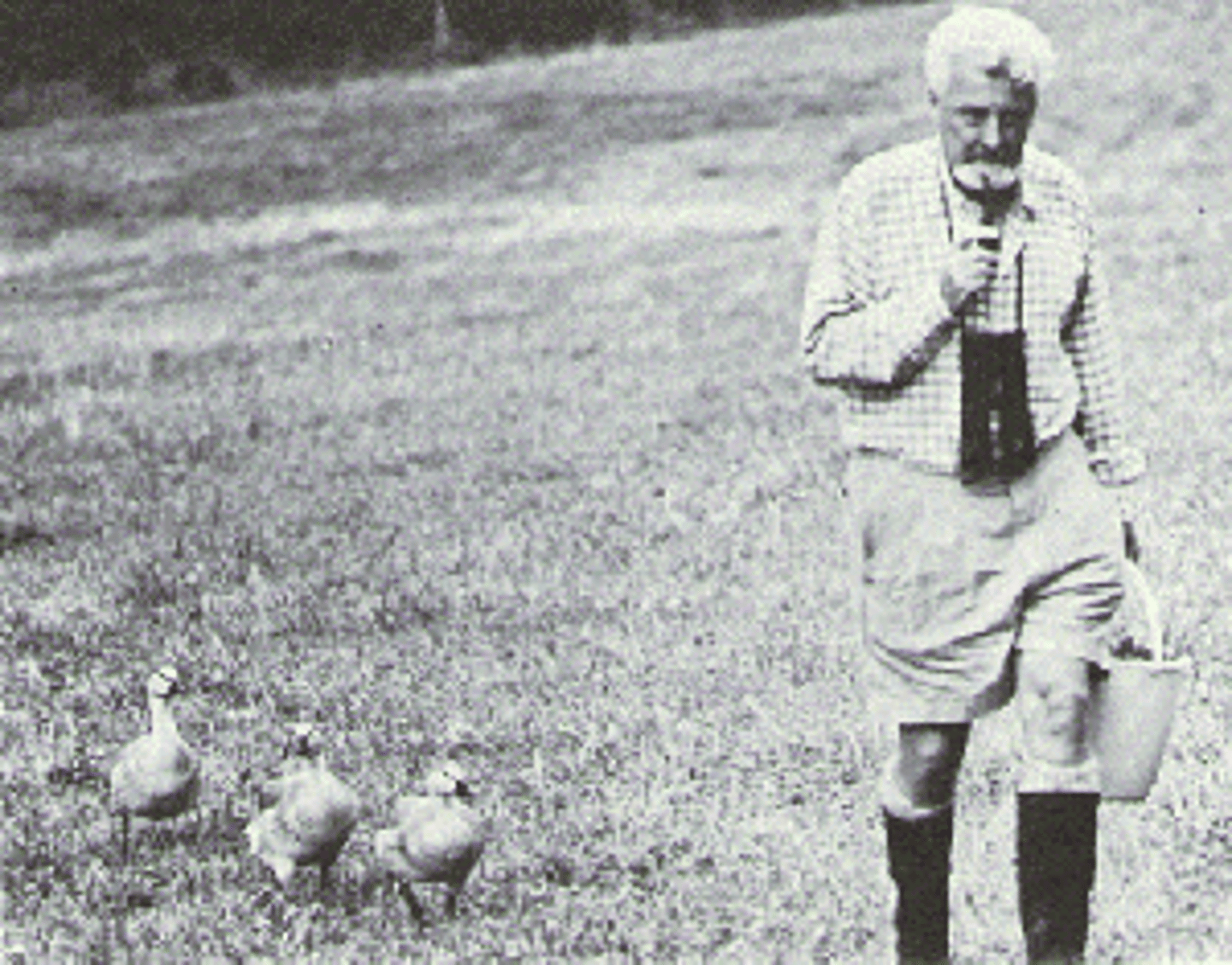
imprinting
= the idea that some species attach to the first moving object they see when they're born

Lorenz' geese study 1952
conducted an experiemnet in which goslings were hatched either with their mother or in an incubator
- 12 fertilised geese eggs and split them into 2 groups of 2
g1 = control group, remained with the mother until hatched
g2 = experimental group, placed in an incubator and lorenz spoke to them
- once the goslings had hatched, they were observed and proceeded to follow the 1st moving object they saw between 13-16 hours after hatching
(1st moving object = lorenz)
- later observed that, if the groups mixed, they would automatically split into their original groups
- lorenz' goslings were observed to follow him everywhere and even as adults the goslings still sought him out as "mother"
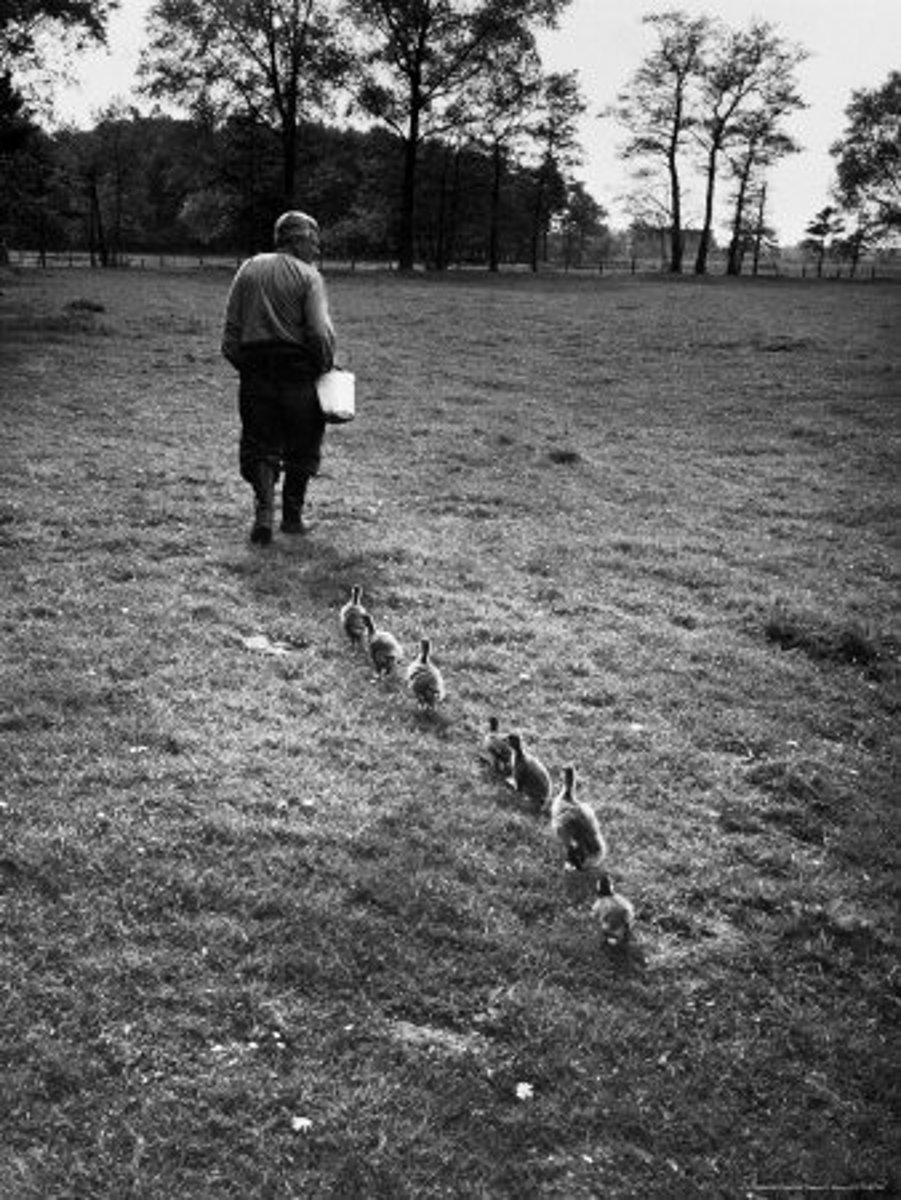
Lorenz findings
- animals are innately programmed to imprint onto the first moving object that they see
- having a biological basis for attachment is adaptive as it promotes survival
- goslings imprint after a matter of minutes due to increased mobility
- attachment is innate and genetically programmed
Harry Harlow
1958
8 rhesus monkey
comfort and security vs food and nourishment
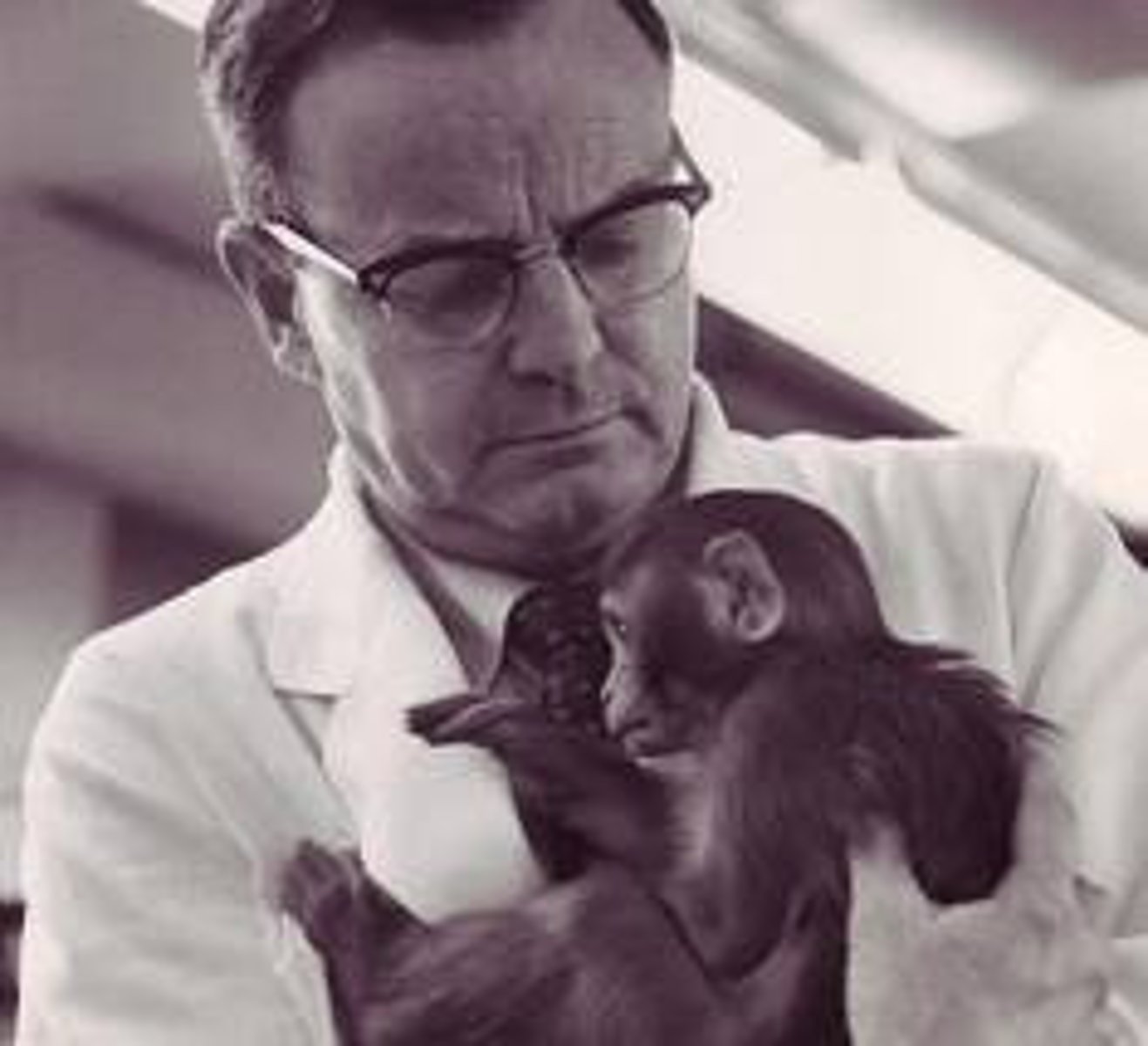
Harlow's Monkey study (1)
8 rhesus monkeys were removed from their mothers a few hours after being born and were caged from infancy
measured the amount of time the monkeys spent with the surrogate mothers and the amount of time they cried for their biological mother
- wire mesh surrogate mother dispensed food
- cloth covered surrogate mother did not dispense food
... monkeys chose to spend 17-18 hours day with cloth mother
... separated infant rhesus monkeys would show attachment behaviour towards the cloth covered surrogate, seeking comfort
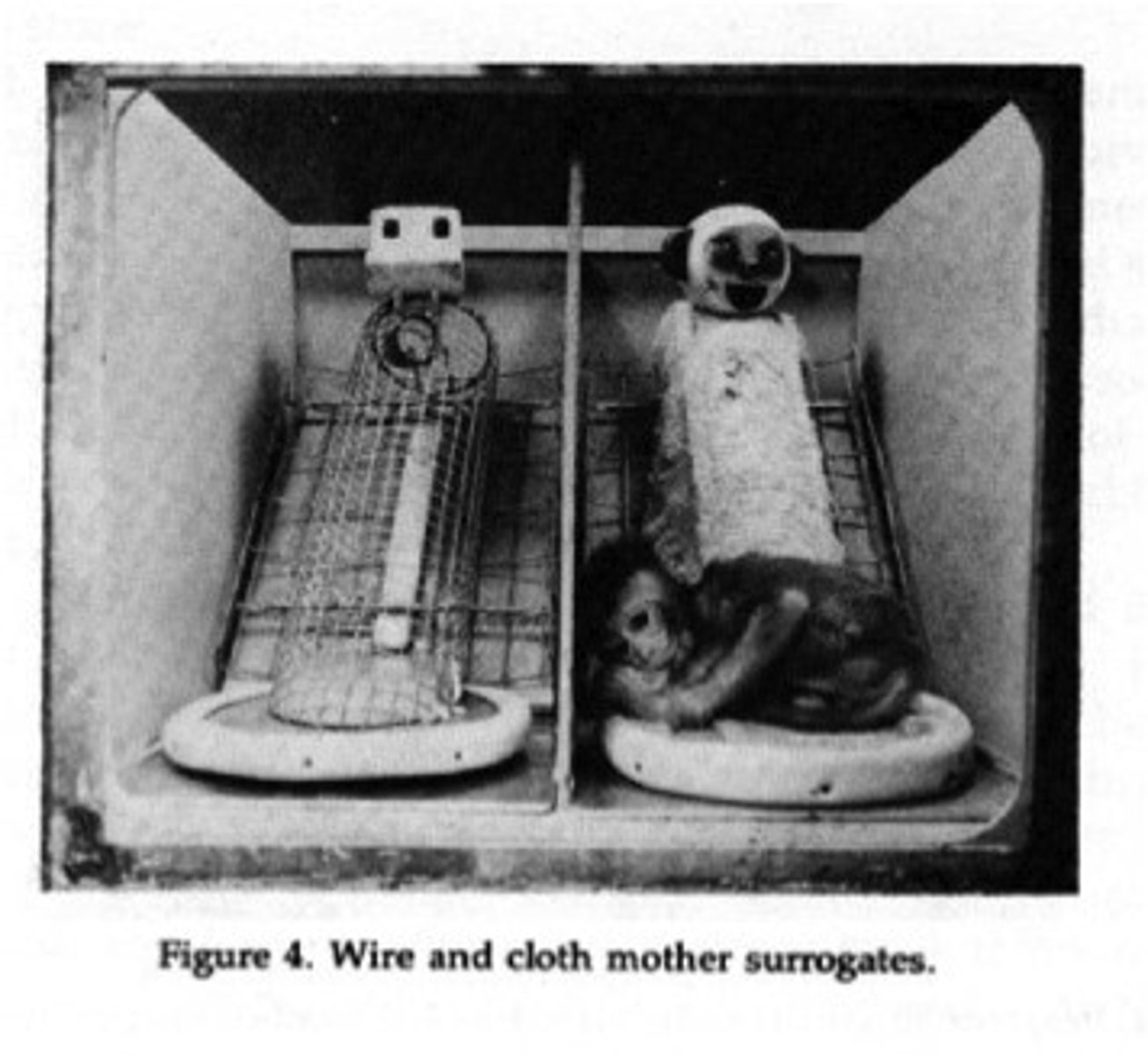
Harlow's Monkeys scenario 2: frightening the monkeys
decided to scare the monkeys to see how they would react
... created an ugly scary paper monster to surprise and frighten them
when monster appeared, the monkeys screeched and cried, and then ran immediately to the cloth covered surrogate mother for comfort and security
- monkeys were willing to explore a room full of novel toys when cloth surrogate was present, but displayed phobic responses when only wire surrogate was present
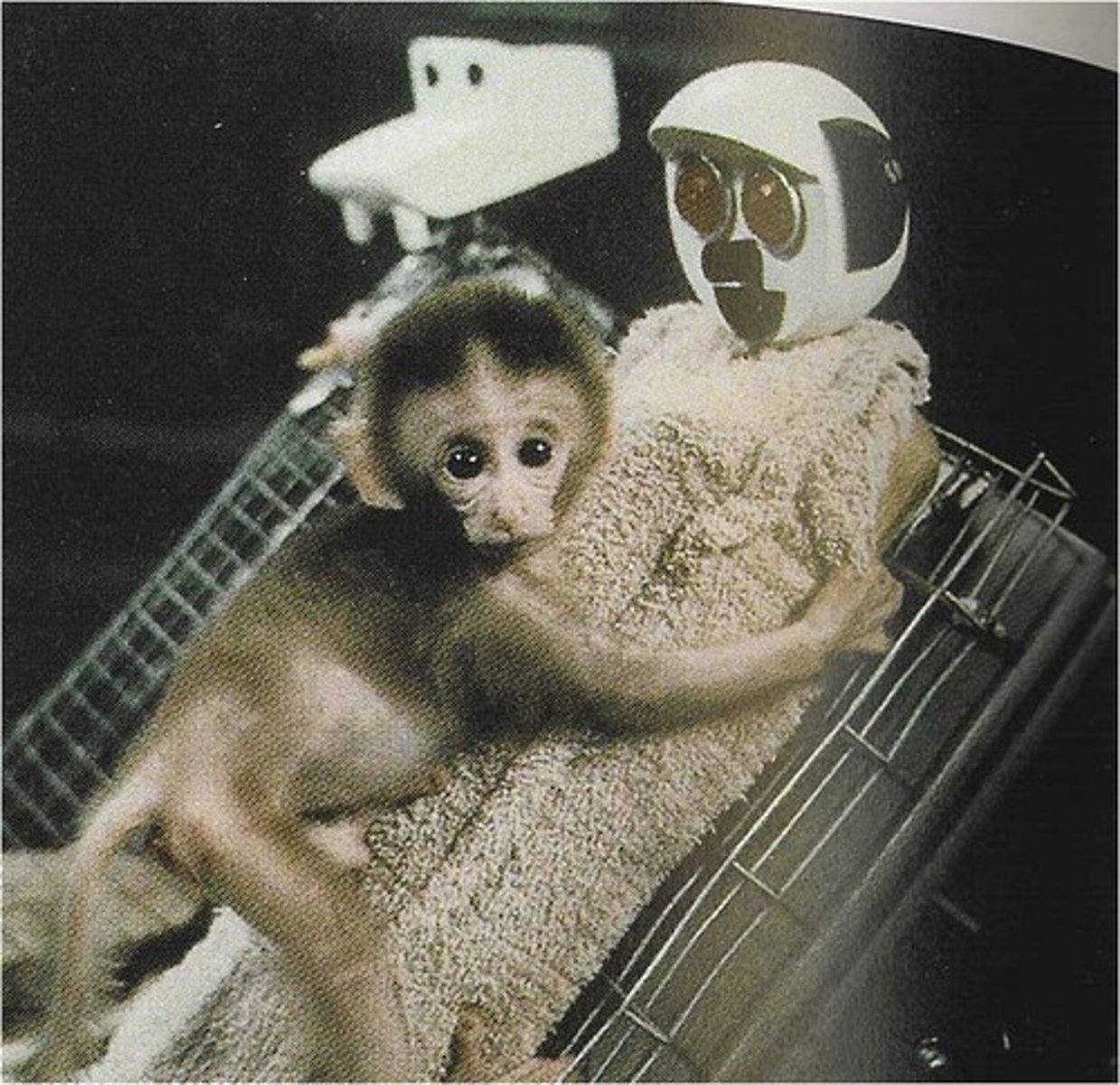
Harlow's monkeys long term observations
reviewed the infant monkeys and their long term conditions as a result of th experiment
- for those that were reared in a social (non-isolated) environment, these monkeys went on to develop into healthy adults
- the monkeys in isolation with the surrogate mothers all displayed dysfunctional adult behaviour
e.g., being timid, being unpredictable with other monkeys, difficulty mating, females went on to be inadequate mothers
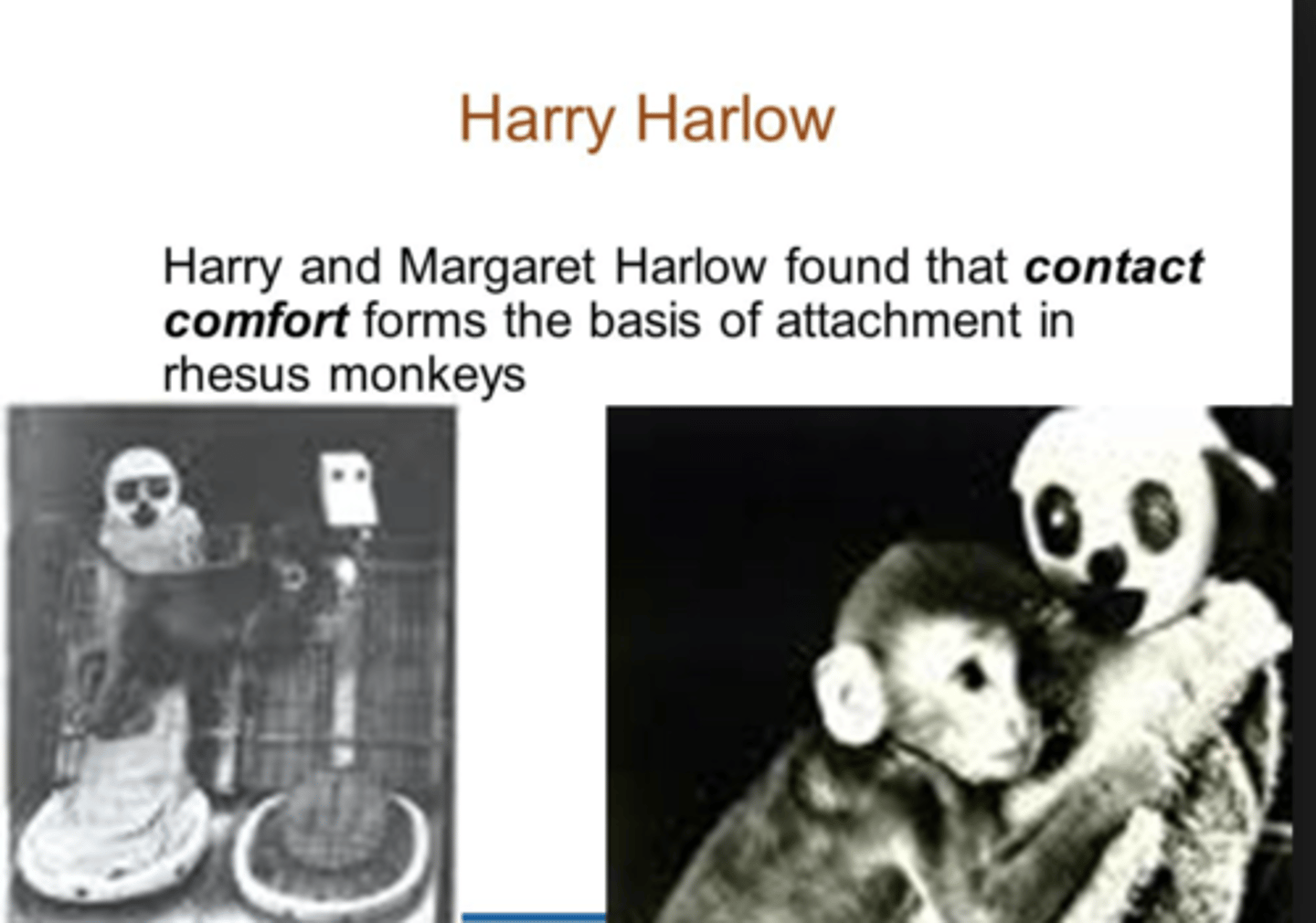
A03 Animal studies of attachment STRENGTH (similar)
P
a strength of harlow's study is that the brains of humans and monkeys are similar.
EV
Green (1994) states that, on a biological level, all mammals (including rhesus monkeys) have the same brain structure as humans, with the only difference relating to the size and number of connections
EX
therefore, the findings from harlow's study can be generalised to humans due to the similarities in biological and psychological structures between the two species, which increases the reliability of the study
EXT
furthermore, research from washington university has also show that rhesus monkeys share 93% of their DNA with humans after studying their genome
LB
this strengthens Harlow's findings and allows the conclusions made from the study to be applied to human behaviour as it increases its credibility
AO3 Animal Studies in Attachment WEAKNESS (ungeneralisable)
P
A weakness of animal studies for attachment is that the findings cannot be extrapolated and applied to complex human behaviour.
EX
The mammalian attachment system has been found to be different to the attachment system of birds, and the rhesus monkeys have arguably less complex cognitive and emotional processes than human do.
EV
For example, mammalian mothers have been known to show more emotional attachment to their young than birds do, and the rhesus monkeys clinging to cloth-covered wire models are unlikely to reflect the emotional connections and interactions that characterises human attachment.
EXT
However, it could be argued that Harlow's research has many practical applications and profound implications for childcare. Due to the emphasis on the importance of early experiences on long term development, Harlow's findings show that all of children's needs are catered for, and that taking care of a child's physical needs alone is not sufficient.
LB
Despite this, we are not able to ignore the differences between animals and humans, and as a result of this, it is inappropriate to generalise the research from animal studies of attachment human behaviour.
A03 Animal Studies in Attachment WEAKNESS (unethical)
P
Animal studies of attachment can be criticised as breaking many ethical guidelines.
EV
For example, Harlow's study has been seen as unnecessarily cruel, as the rhesus monkeys were scared by a "paper monster" for the purpose of the research, and were isolated and deprived from social interaction, which led the isolated monkeys to develop long-term dysfunctional adult behaviour such as being aggressive, having difficulty mating, and being inadequate mothers themselves.
EX
This is a weakness as it could be argued that animals have a right not to be researched, to be raised in a natural setting, and to not be harmed, and therefore Harlow and Lorenz's research violated these guidelines.
C
However, Guiton suggested that these changes in behaviour were not permanent and could be reversed. He proposed that, after spending time with their own species, animals used in studies were able to engage on normal sexual and social behaviour, suggesting that the effects of the studies were only temporary and did not cause long lasting damage.
LB
Consequently, the pursuit of academic conclusions for human benefits could be seen as detrimental to non-human species.